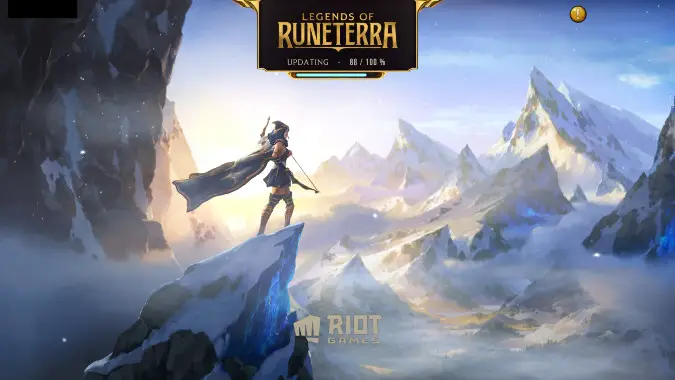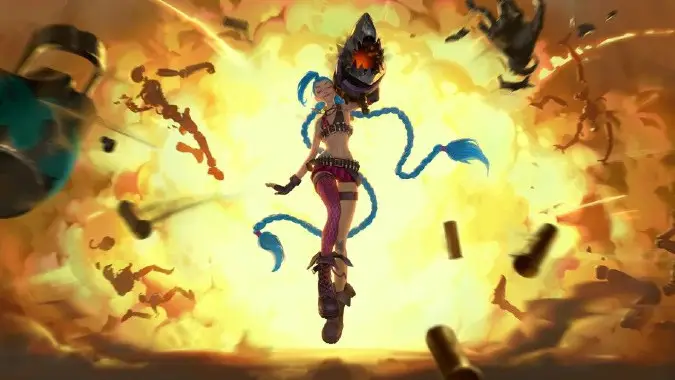How Hearthstone players can get started with Legends of Runeterra

While Hearthstone is a very solid card game, it’s not the only one out there. Riot Games released Legends of Runeterra, and there is enough overlap between the two games to pique the interest of many Hearthstone players. Besides, competition is usually a good thing; it can drive up the quality of each game, so Hearthstone is probably better off for having a worthy opponent in LOR.
To get started with Legends of Runeterra, go to the Official Website and create a Riot account. Then, download the client. You’ll be thrown into a long tutorial where you will face a lot of battles against the AI, which should teach you the basics.

The basics of Legends of Runeterra
Health
Instead of two heroes directly duking it out, in LOR, each player is defending a structure called a “Nexus.” It has 20 health, and the game ends when it reaches zero. So no practical difference, really.
Cards
Cards display cost, power, and health in the corners, just like Hearthstone (and most card games). No surprises there either.
There are three card types:
- Spells: Can be further divided into three subtypes:
- Slow — Can only be used outside of combat, for strong effects. Your opponent has a chance to respond before it resolves.
- Fast — Can be used at any time, even during combat. Your opponent has a chance to respond before it resolves.
- Burst — Can be used at any time, even during combat, but the effects aren’t as strong. Resolves instantly; your opponent has no chance to respond.
- Followers: Regular minions.
- Champions: Stronger minions, with special effects, but a little different from Legendary minions in Hearthstone. Champions can level up, and become even stronger. Your decks can only have six Champions, and up to three copies of each.
Decks
Like Hearthstone, decks are composed of 40 (rather than 30) cards. But each card can have up to three copies in a deck, unlike Hearthstone’s limit of two.
Instead of selecting a class, in LOR, you’ll pick two Factions (from the seven available) to form your deck. Below, you will find a very basic description of each:
- Shadow Isles: Death and Sacrifice — Sacrifice units for powerful effects and lifesteal, similar to Hearthstone’s Warlock.
- Ionia: Storm of Steel — Evade damage, summon units that aren’t too strong but can bypass the enemy’s armor, somewhat similar to Hearthstone’s Rogue.
- Bilgewater: Risk and Reward — Control the board, use discard mechanics, and summon strong units. Somewhat similar to Hearthstone’s Priest or Warrior.
- Piltover & Zaun: Machinations and Mayhem — Lots of spell cards, with both offensive and defensive uses, similar to Hearthstone’s Mage.
- Demacia: Magical Might — summon several low-cost units, and buff them, similarly to Hearthstone’s Paladin.
- Noxus: All-Out Assault — Aggro. Enough said. Probably closest to Hearthstone’s Hunter.
- Freljord: Frozen Fortitude — Control your mana, and summon few but big units, similar to Hearthstone’s Druid.
Keywords
Honestly, there are so many of them that you might as well check the wiki to look for specific information. But most of them are very similar to those found in Hearthstone, Magic, and other card games.
Mana
LOR uses the same progressive mana system from Hearthstone (you start with one mana, and gain one each turn, until you hit ten).
One key difference, though, is the “spell mana” mechanic. A small pool of up to three unspent mana carries over to your next turn. That extra mana can only be used to cast spells (not followers or champions), though; but, if you count it, your max mana pool goes as high as 13!
Board space
Your board can have up to six units, unlike Hearthstone’s seven.

Gameplay flow in Legends of Runeterra
On each turn, one player attacks, while the other defends (identified by the sword and shield icons). After one player is done with their attack phase, it’s the other player’s turn to attack. This cycle keeps repeating itself until the end of the game.
When the turn starts, both players draw a card and gain an additional mana point (if they’re still below ten). The attacker can then summon units, or cast spells. It the attacker casts a Slow or Fast spell, the defender can react with their own spell, or even summon a unit.
In fact, it should be noted that this cycle of “action and reaction” is the main “gameplay beat” of LOR: A player plays a card, the other player gets the chance to respond. Most of the game revolves around that; even during combat. This style of interaction is the major difference between this game and Hearthstone (where a player does everything they can and then fully passes their turn). Here, players have to keep passing their “actions” (by clicking “OK” or “Pass” on the side), multiple times, within the same turn.
Combat Flow
- The attacking player chooses which of his units will attack this turn.
- The defending player chooses specific units to block the attackers (like in Magic: The Gathering). The defender can also use spell cards now.
- Combat happens: Attackers and blockers deal damage to each other. Any attacker that went unblocked deals damage to the enemy Nexus.
- After combat, both players can still spend their remaining mana to summon new units or cast spells.

Economy and progression in Legends of Runeterra
The most obvious difference between LOR and Hearthstone: In this game, there are no packs with random cards to purchase. Instead, it uses a system where you earn experience from playing, and unlock rewards in a predetermined “path.”
First of all, you decide which Region’s path you want to follow. The experience you earn will go towards progressing your level with your selected Region, giving you Wildcards, Champions, and more rewards. And every week, you’ll gain additional rewards — depending on your progress — from the Vault.
Currency
Basically, there are Shards, Wildcards, and Coins.
- Shards are collected just by playing the game, and can be spent on cards, or turned into Wildcards. They are similar to “dust” in Hearthstone.
- Wildcards are like a more specialized version of Shards. They have a rarity of their own, and can be used to craft copies of cards of the corresponding rarity.
- Coins are purchasable with real money; they can’t be obtained in-game. They can be used to purchase cosmetics, like different boards, and guardians to inhabit them.

Conclusion
This game plays like a mix of Magic: The Gathering and Hearthstone — simpler than the former, more complex than the latter — but it should quickly feel familiar enough. It’s more complicated than Hearthstone, sure, but not overwhelmingly so.
Overall, Legends of Runeterra is certainly worth a try for card game enthusiasts, and it does some things that Hearthstone could definitely stand to learn from — especially in regards to the progression system.
Please consider supporting our Patreon!
Join the Discussion
Blizzard Watch is a safe space for all readers. By leaving comments on this site you agree to follow our commenting and community guidelines.
 @harmonicstrike
@harmonicstrike




